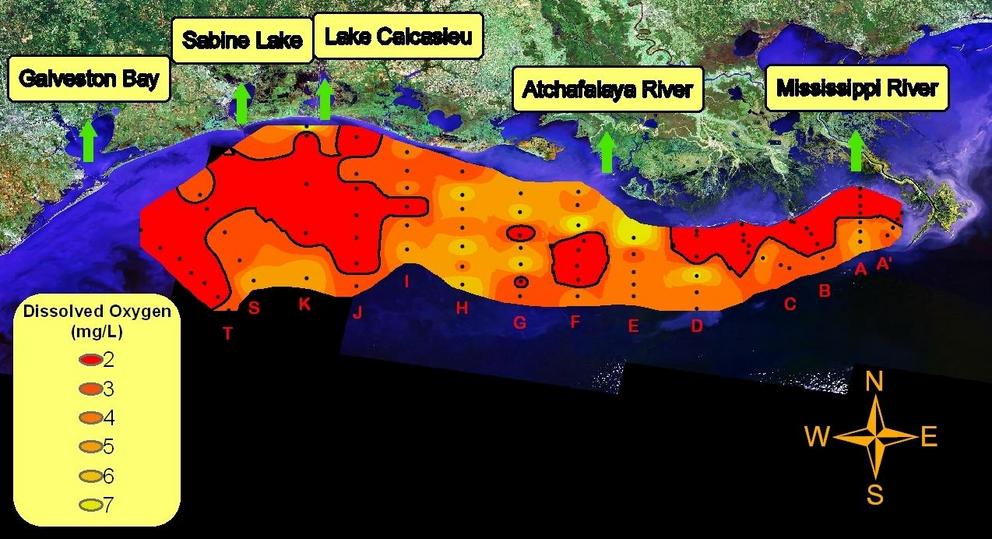Gulf of Mexico 'dead zone' forecasted to exceed the size of Connecticut
Scientists have predicted the dead zone, or area with little to no oxygen in the northern Gulf of Mexico, will become larger than the state of Connecticut by the end of July. The dead zone will cover about 6,620 square miles of the bottom of the continental shelf off Louisiana and Texas. While there are more than 500 dead zones around the world, the northern Gulf of Mexico dead zone is the second largest human-caused coastal hypoxic area in the world.
Although this forecast has been the average size for the past 31 years, it is about three and a half times larger than the goal outlined by the Hypoxia Action Plan, which is about 1,930 square miles. Efforts to reduce the nitrate loading have not yet demonstrated success at the watershed scale.
Every year LSU Department of Oceanography & Coastal Sciences professors and Louisiana Universities Marine Consortium scientists Nancy Rabalais and Eugene Turner conduct a research cruise to measure the dead zone, which has little or no oxygen in the bottom waters. Turner and Rabalais then use these data in their computer models to predict its size in the summer. The new report and forecast will be available June 7.
"The oceans warm a little more each year and currents change, making new observations a necessity. Model calibration is not a fixed phenomenon," Turner said.
Nutrients from the Mississippi River watershed, particularly nitrogen and phosphorus, fertilize the Gulf of Mexico's surface waters to create excessive amounts of algae. When the algae decomposes in the deepest parts of the ocean, it leads to oxygen distress and can even kill organisms in the Gulf of Mexico's richest waters. These low oxygen conditions threaten living resources including fish, shrimp and crabs, which humans depend upon for food and industry.
"This means that the impacts of water quality changes upstream in the Midwest affect our coast—directly," Rabalais said.
The dead zone occurs year-round, but it is most persistent and severe in spring and summer. Various computer models use the May nitrogen load of the Mississippi River as the main driving force to predict the size of this hypoxic zone in late July. If a storm occurs, then the size of the dead zone is predicted to be reduced to about 6,316 square miles.
The National Oceanic and Atmospheric Administration uses the results from the LSU scientists' computer models as well as several other models to generate its forecast, which is about 5,830 square miles.
Provided by: Louisiana State University

